![]()
Cassandra Thielen Friday, January 31, 2003
Freeze Frame/Mini Interview
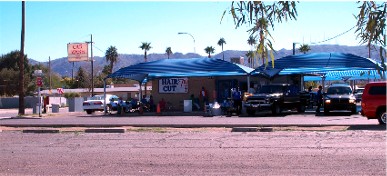
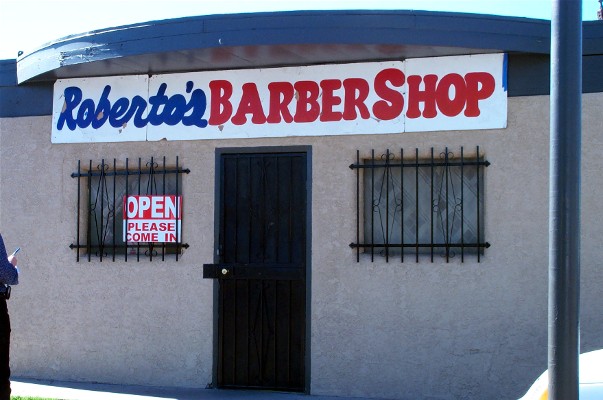
On the Southwest corner of Central and St. Charles is Roberto’s Barbershop.
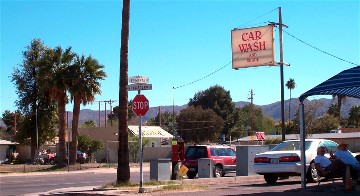 From afar, it looks
like a little place where only locals would dare venture to get a hair cut. On
the South, West and North sides of this petite structure is an extension of the building used as a separate business. Attached to Roberto’s Barbershop is a
carwash. It makes sense. While you wait to get your car washed you might as
well get a fade. To our surprise, it didn’t seem to work that way.
From afar, it looks
like a little place where only locals would dare venture to get a hair cut. On
the South, West and North sides of this petite structure is an extension of the building used as a separate business. Attached to Roberto’s Barbershop is a
carwash. It makes sense. While you wait to get your car washed you might as
well get a fade. To our surprise, it didn’t seem to work that way.
When we entered the barbershop, we noticed four barber chairs, checkerboard
tile, some waiting chairs, and a small television sitting atop a Pac Man arcade
game along with another arcade game.
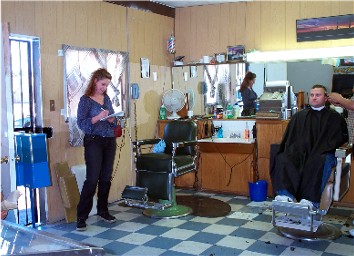
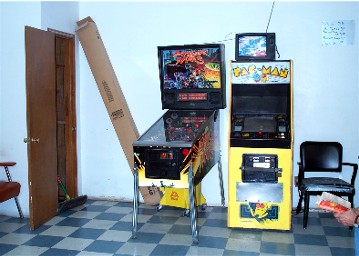
The barber on staff was not the owner, but did tell us that the owner ran the
barbershop and leased out the backside of the shop to the carwash. He believed that the barbershop had been established since 1975. In its original
form, instead of the current blue and white paint the building displayed vibrant red and
white stripes.
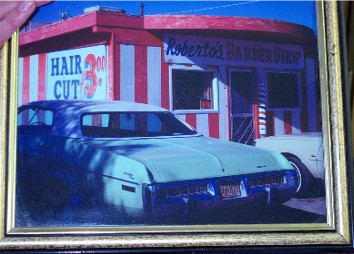 When
comparing the old shot with the new, I notice many differences. Not only
have the prices changed along with the colors, but now there are bars across the
windows and a security door. The concept of evolving and adapting for
survival is seen across every area of life and obviously some more than others
including businesses.
When
comparing the old shot with the new, I notice many differences. Not only
have the prices changed along with the colors, but now there are bars across the
windows and a security door. The concept of evolving and adapting for
survival is seen across every area of life and obviously some more than others
including businesses.
A Hispanic man was receiving a hair cut and had a rather unexpected response when our research team asked if we could photograph him. He immediately responded, “I am not Native American, so it is okay.” I had to ask the gentleman to repeat himself because this was not the answer I had anticipated. Later when thinking about his comment I thought of how many other cultures were prevalent in South Phoenix. South Phoenix, economically and geographically, has been known as a gathering place for poverty and misfortune. Considering the potential hardships of adapting to new culture and living outside of the reservation, perhaps there are numerous Native Americans as well as Hispanics and African Americans living in this area.
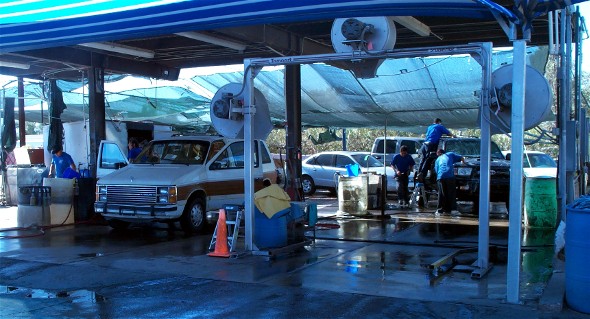 As
far as prices for service, one could get a haircut for $7.00 and a car
wash for about the same price assuming you owned a small compact car. Trucks
ran from $7.00 to as high as $20.00 and above not including tip.
As
far as prices for service, one could get a haircut for $7.00 and a car
wash for about the same price assuming you owned a small compact car. Trucks
ran from $7.00 to as high as $20.00 and above not including tip.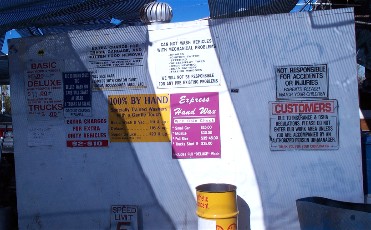
As we explored the car wash facility I took advantage of an interview opportunity. A young African American male waiting for his Honda Prelude admitted to visiting the car wash on a weekly basis for the last 5 years, but not the barbershop. After pondering his remark, I thought perhaps this particular barbershop was catered to Hispanic men and children. This individual was 21 years of age and a current ASU Main student attending the engineering program. He originated from North Carolina. When asked about his awareness of the changing environment, he presented a consciousness in regards to what we call “gentrification.” He had noticed the new subdivisions and wondered where they would stop and who would eventually be kicked out. He did not comment as to whether or not he agreed with the transformation or rejuvenation of South Phoenix into South Mountain Village. Assuming he will graduate and go back to North Carolina, this may not be a major issue for him. For identification purposes I asked if I could take a picture of either himself or possibly his car. He agreed to the photograph of his car as long as I excluded his license plate.
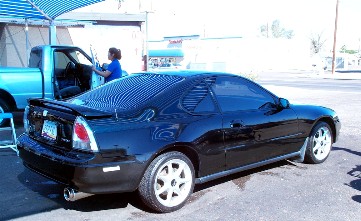
All together, I felt an overall warmth and acceptance from both establishments.
![]()